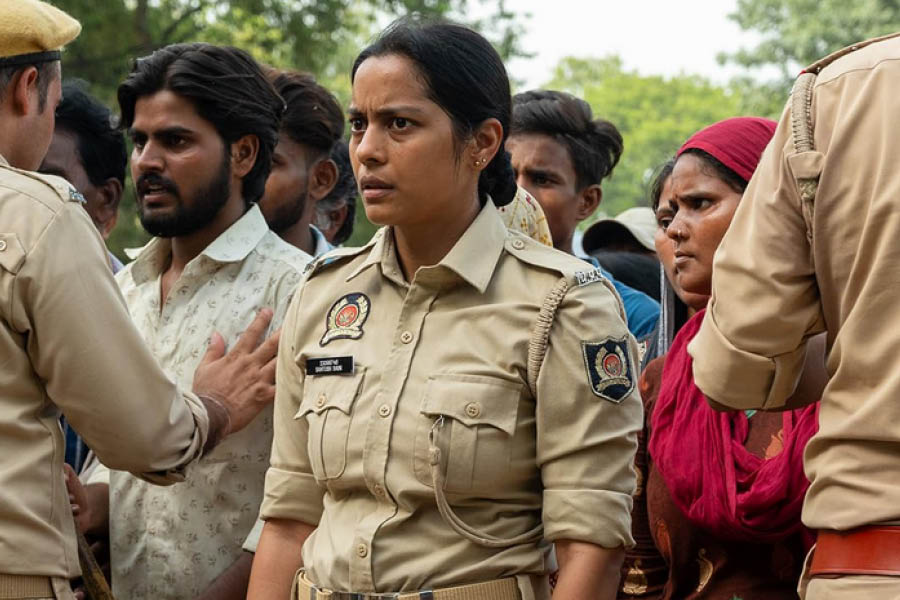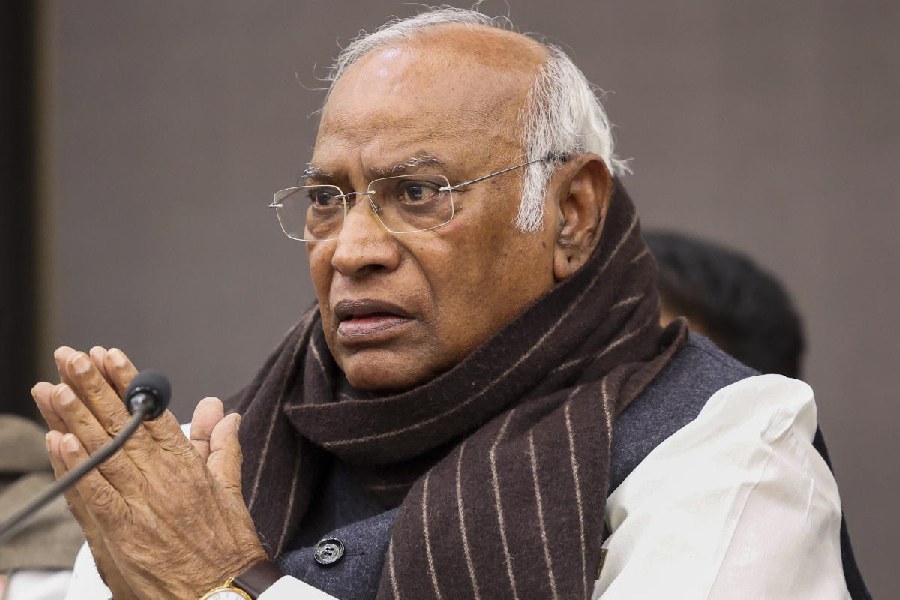Sandhya Suri’s Santosh, shortlisted by The Academy of Motion Pictures, Arts and Sciences for the 97th Oscars in the best international feature category, is a cinematic exploration of power, caste, and the haunting realities of communal divisions in modern India. The film blends its fiercely feminist narrative with a critical look at the institutional systems that perpetuate inequality. Here’s why Santosh is a must-watch for global audiences.
A complex feminist protagonist in a patriarchal society
At the heart of Santosh is Shahana Goswami’s compelling portrayal of Santosh, a Hindu widow navigating the oppressive labyrinth of institutionalised patriarchy. After inheriting her late husband’s job as a police constable, Santosh dons the khaki uniform, which quickly becomes a metaphor for empowerment.
Santosh is a complex character — a grieving woman slowly absorbing the language and corruption of the police force while grappling with her own biases. The audience’s initial sympathy for her transforms as she becomes enmeshed in the very structures she once resisted. Goswami’s nuanced performance captures this evolution with striking realism, making Santosh a deeply relatable yet unsettling character.
Deconstructing the institutional biases within the police force
In stark contrast to mainstream Bollywood’s glorification of police authority, Santosh dissects the unsettling realities of law enforcement in India. Films like Rohit Shetty’s Cop Universe celebrate vigilante justice and extra-judicial killings, presenting them as heroic acts. Santosh takes a sharply critical stance, exposing how power, especially when combined with caste and religious biases, can turn oppressive and violent.
Through Santosh’s journey, the film critiques the normalisation of police brutality, moral policing, and institutionalised corruption. What starts as an amusing initiation into police culture quickly morphs into a chilling exploration of its darker sides, leaving viewers questioning their own complicity in these societal norms.
A gripping crime drama with social commentary
The murder of a Dalit girl serves as the film’s central plot, drawing attention to India’s deeply entrenched caste system and its impact on justice. When a charismatic senior officer, Inspector Geeta Sharma (played by Sunita Rajwar), steps in to lead the investigation, she mentors Santosh in ways that are both empowering and morally ambiguous.
As the investigation unfolds, Santosh’s inherent caste and religious biases come to the fore. Her aggressive pursuit of a Muslim suspect reflects the societal prejudices that influence even well-meaning individuals. The film forces viewers to confront the chilling fluidity of justice in India, which shifts based on caste, religion, and social status.
A feminist tale that subverts expectations
While Santosh appears to be an empowerment saga, this is merely a façade. The film unpacks the unsettling allure of power and its ability to corrupt even the most well-intentioned individuals. Santosh’s transformation from a grieving widow to a complicit authority figure is both tragic and thought-provoking.
In a pivotal moment, Santosh witnesses police brutality and is horrified — initially. Her subsequent action — taking up the baton and beating the suspect black and blue — reveals a terrifying shift in her, one that mirrors the institutional indoctrination she has undergone.
A visual and emotional experience
Sandhya Suri’s direction ensures that Santosh remains tethered to its protagonist’s perspective. The camera lingers on Santosh during moments of introspection and fury, creating an intimate yet unsettling connection between the character and the audience. This stylistic choice, combined with the apocalyptic portrayal of north India, transforms the film into an academic exploration of societal structures.
While the film lacks clarity about its central case, it compensates by exposing the unsavoury implications of caste and religious hegemony. Its grim tone offers little levity, but this deliberate choice reinforces the weight of its subject matter.











